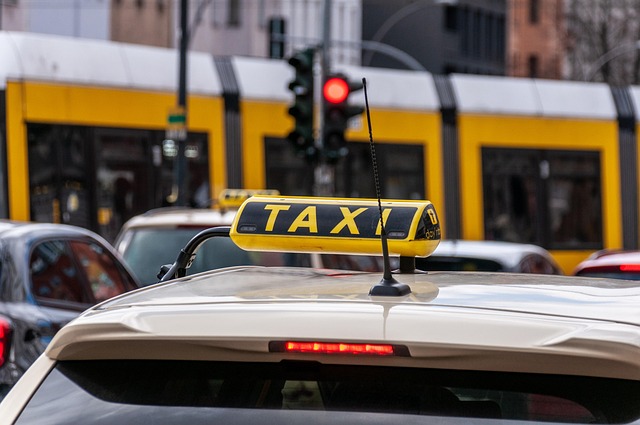Looking to register your car in California? This comprehensive guide breaks down the process step-by-step. From understanding key requirements to navigating VIN verification, you’ll learn everything needed to ensure a smooth registration experience. Gather essential documents, perform the mandatory VIN check, select the right registration type, and submit your application with ease. Streamline the process today!
- Understand California Car Registration Requirements
- Gather Necessary Documents for VIN Verification
- Perform Vehicle Identification Number (VIN) Check
- Choose an Appropriate Registration Type
- Submit Application and Pay Fees
Understand California Car Registration Requirements

Before diving into the registration process, it’s crucial to understand California’s car registration requirements. Unlike some states, California mandates that vehicle owners register their cars annually rather than every two years. This ensures a current and accurate record of all vehicles on the road. A key aspect of this process is the Vehicle Identification Number (VIN) verification. This unique 17-character code serves as a digital fingerprint for your car and must match the information provided to the California Department of Motor Vehicles (DMV).
A proper VIN inspection is critical to prevent fraud or registration errors. Thankfully, modern technology has made this process more accessible with services like mobile VIN verification. A mobile vin verifier allows you to conduct this check conveniently, often with just a few clicks from your smartphone. By ensuring the accuracy of your vehicle’s information during registration, you help maintain California’s comprehensive and secure vehicle record-keeping system.
Gather Necessary Documents for VIN Verification

Before you start the registration process, make sure to gather all the essential documents for VIN (Vehicle Identification Number) verification. This step is crucial as it ensures the accuracy of your vehicle’s information and facilitates a smoother registration. You’ll need the registration certificate from the previous owner, which proves ownership and provides vital details about the car. Additionally, a valid driver’s license or state-issued ID card is mandatory for both the current owner and any other registered driver.
For convenience, many services offer mobile VIN verification, also known as a mobile vin inspection, where a professional can visit you at your location to complete this process. This option is especially beneficial if you have limited mobility or simply prefer not to visit a DMV (Department of Motor Vehicles) office. Ensure that all documents are up-to-date and accurate to avoid any delays in the registration procedure.
Perform Vehicle Identification Number (VIN) Check

Before you register your car in California, it’s crucial to perform a Vehicle Identification Number (VIN) check. This step is essential for ensuring that the vehicle you’re planning to register is genuine and has not been reported stolen or had its identity altered. The process is straightforward; you can conduct a VIN verification through an online database by simply entering your car’s unique VIN number. Many services offer mobile vin inspection, allowing you to complete this task conveniently without having to visit a dealership or DMV office.
By conducting a thorough VIN inspection, you’ll gain valuable insights into the vehicle’s history, including its previous owners, service records, and any reported incidents. This information is vital when establishing the car’s value and ensuring compliance with California’s registration requirements. With accurate data from a mobile vin verification, you can proceed with confidence, knowing that your registration process will be smoother and more efficient.
Choose an Appropriate Registration Type

When registering your car in California, understanding the different registration types is crucial. The appropriate choice depends on factors like ownership, vehicle use, and whether you’re a first-time registrant or renewing. One key consideration early in the process is vin verification. This involves checking your Vehicle Identification Number (VIN) to ensure its accuracy and history, which can be done through services like mobile vin verification or a vin inspection.
For example, if you’re purchasing a used car, a thorough vin inspection by a professional can reveal potential issues that might affect registration, such as flood damage or odometer rollback. This knowledge helps ensure you select the right registration type, whether it’s for personal use, commercial purposes, or a specialized category like classic cars.
Submit Application and Pay Fees

To officially register your car in California, the next step after preparing all necessary documents is to submit an application and pay the required fees. This process involves completing the Application for Title and Registration form, available from the California Department of Motor Vehicles (DMV). Ensure that all information provided is accurate and up-to-date.
Alongside your application, you’ll need to submit a valid VIN verification report. You can obtain this through a mobile vin verifier or by scheduling a vin inspection at a designated DMV location. This critical step verifies the vehicle’s identity and history, ensuring compliance with California’s regulations. After submitting your application and fees, along with the accurate and verified VIN details, the DMV will process your request, leading to the issuance of a registration certificate and license plate for your car.
Registering a car in California involves understanding state requirements, gathering essential documents, and completing a VIN verification process. By following these steps, from selecting the right registration type to submitting your application and fees, you can ensure your vehicle is legally registered and ready to hit the road. Remember, accurate vin verification is crucial for a smooth registration experience.



